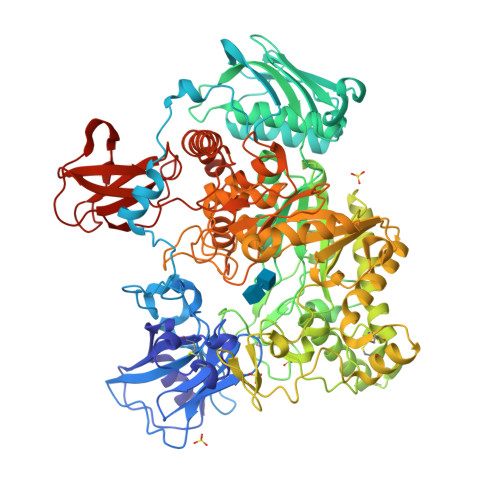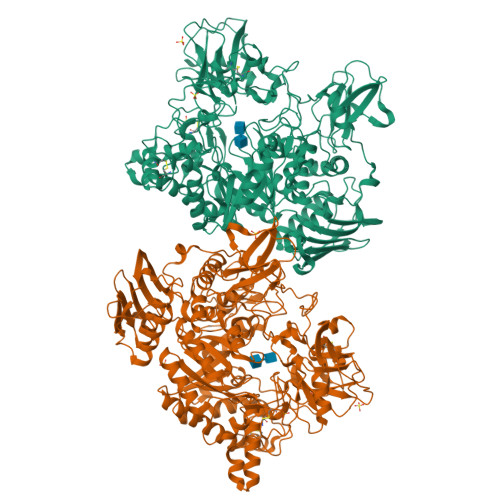Structures of chitobiase mutants complexed with the substrate Di-N-acetyl-d-glucosamine: the catalytic role of the conserved acidic pair, aspartate 539 and glutamate 540.
Prag, G., Papanikolau, Y., Tavlas, G., Vorgias, C.E., Petratos, K., Oppenheim, A.B.(2000) J Mol Biology 300: 611-617
- PubMed: 10884356
- DOI: https://doi.org/10.1006/jmbi.2000.3906
- Primary Citation of Related Structures:
1C7S, 1C7T - PubMed Abstract:
The catalytic domain of chitobiase (beta-N-1-4 acetylhexosaminidase) from Serratia marcescens, is an alpha/beta TIM-barrel. This enzyme belongs to family 20 of glycosyl hydrolases in which a conserved amino acid pair, aspartate-glutamate, is present (Asp539-Glu540). It was proposed that catalysis by this enzyme family is carried out by glutamate 540 acting as a proton donor and by the acetamido group of the substrate as a nucleophile. We investigated the role of Asp539 and Glu540 by site-directed mutagenesis, biochemical characterization and by structural analyses of chitobiase -substrate co-crystals. We found that both residues are essential for chitobiase activity. The mutations, however, led to subtle changes in the catalytic site. Our results support the model that Glu540 acts as the proton donor and that Asp539 acts in several different ways. Asp539 restrains the acetamido group of the substrate in a specific orientation by forming a hydrogen bond with N2 of the non-reduced (-1) sugar. In addition, this residue participates in substrate binding. It is also required for the correct positioning of Glu540 and may provide additional negative charge at the active site. Thus, these biochemical and structural studies provide a molecular explanation for the functional importance and conservation of these residues.
Organizational Affiliation:
The Department of Molecular Genetics and Biotechnology, The Hebrew University-Hadassah Medical School, Jerusalem, 91120, Israel.


















